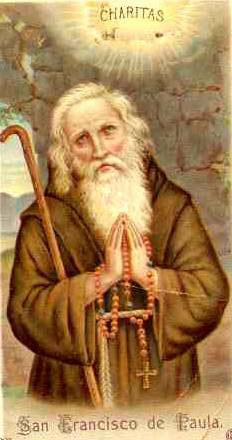We ask you, urgently: don't scroll past this
Dear readers, Catholic Online was de-platformed by Shopify for our pro-life beliefs. They shut down our Catholic Online, Catholic Online School, Prayer Candles, and Catholic Online Learning Resources essential faith tools serving over 1.4 million students and millions of families worldwide. Our founders, now in their 70's, just gave their entire life savings to protect this mission. But fewer than 2% of readers donate. If everyone gave just $5, the cost of a coffee, we could rebuild stronger and keep Catholic education free for all. Stand with us in faith. Thank you.Help Now >
Reading Abbey
FREE Catholic Classes
Reading Abbey in Surrey, England, was founded by Henry I in 1121, who built it, writes William of Malmesbury, "between the rivers Kennet and Thames, in a spot calculated for the reception of almost all who might have occasion to travel to the most populous cities of England, where he placed monks of the Cluniac Order, who are to this day a noble pattern of holiness and an example of unwearied and delightful hospitality ". The foundation charter declares that the new monastery takes the place of three others, Reading, Choisey, and Leominster; dedicates it to the Blessed Virgin and St. John the Evangelist ; accords it every civil privilege conceded to royal monasteries, and instructs the abbot to employ the alms at his disposal for "the entertainment of the prior, pilgrims, and guests". The first abbot was Hugues de Boves, late Prior of St. Pancras, Lewes, afterwards Archbishop of Rouen. From the beginning it was an independent English abbey, which, whilst retaining the Cluniac observance, elected its own abbots, paid no impost to the mother-house, was exempt from Cluniac visitation, and never acknowledged the jurisdiction of the General Chapter or Abbot of Cluny. Hence, though it has been described as a Cluniac establishment in ancient documents, even in papal letters of so late a date as 1309, it was never an "alien" house, and Cluny can only claim the credit of having set it going with monks and monastic customs.
The abbey precincts covered about thirty acres and were surrounded on three sides by a great wall with four embattled gateways, one of which, the western or compter gate, served as the town prison. It was entered through an inner gatehouse (existing, restored by Sir G. Scott in 1861) wherein the abbot held his manorial court. The church, consecrated by St. Thomas à Becket in 1164, was 450 feet long and 95 feet broad, with transepts (200 ft.), a Lady-chapel (75 by 50 ft.) built in 1314, and a square central tower with spire. The monastic buildings were on the same scale, and the chapter-house, an apsidal, vaulted hall (79 by 42 ft.), was frequently used as a national council chamber, where Parliament sat, and many synods and ecclesiastical councils were held. There was a leper-hospital, closed in 1413 for lack of inmates. The hospitium had a guest hall (120 ft.), a dormitory (200 ft.) and provision for twenty-six poor pensioners. Part of the building (the dormitory) still exists and for many years was in use as the Royal Grammar School of King Henry VII. The abbot was mitred (1288), a feudal baron, had a seat in Parliament, his own mint, the rectorship of the three Reading parishes and the rents of a number of churches and granges. His chief country-seat was Bere Court, Pangbourne. His officials and servants were some forty, at a time when their number had been cut down for the sake of economy. Three priories (cells) were under his jurisdiction, Leominster (Herefordshire) in England, Rindelgros, and May in Scotland (afterwards resigned into the hands of the Bishop of Aberdeen ). At the dissolution the revenues were valued at £2116 3s. 9¼d. The last abbot was Blessed Hugh Cook, alias Faringdon . After serving as a royal palace during some reigns, the buildings were stripped of their carved and dressed stonework for the repairing and building of churches, bridges, and the like, and not much more than the core of some of the walls, huge masses of flint-concrete, is left to preserve the memory of the great abbey which Henry I designed as the monument of his piety and where his body and that of his son were buried. The chief spiritual treasures of the abbey were the hand of St. James the Apostle (now in the sacristy of St. Peter's, Marlow-on-Thames), presented by Henry I, and the skull of St. Philip, given by King John.
[ Editor's note: Reading is in Berkshire, not in Surrey as stated.]
Join the Movement
When you sign up below, you don't just join an email list - you're joining an entire movement for Free world class Catholic education.

-

- Stations of the Cross
- Easter / Lent
- 5 Lenten Prayers
- Ash Wednesday
- Living Lent
- 7 Morning Prayers
- Mysteries of the Rosary
- Litany of the Bl. Virgin Mary
- Popular Saints
- Popular Prayers
- Female Saints
- Saint Feast Days by Month
- Pray the Rosary
Pope Francis’ April Prayer Intention: Using Technology to Strengthen Human Connections
Finding Peace Through Prayer in a World of Worry
Trump Administration Withholds Federal Grants from Planned Parenthood Over DEI and Civil Rights Concerns
Daily Catholic
 Daily Readings for Wednesday, April 02, 2025
Daily Readings for Wednesday, April 02, 2025 St. Francis of Paola: Saint of the Day for Wednesday, April 02, 2025
St. Francis of Paola: Saint of the Day for Wednesday, April 02, 2025 Prayer for God's Help in Daily Actions: Prayer of the Day for Friday, March 14, 2025
Prayer for God's Help in Daily Actions: Prayer of the Day for Friday, March 14, 2025 Daily Readings for Tuesday, April 01, 2025
Daily Readings for Tuesday, April 01, 2025 St. Hugh of Grenoble: Saint of the Day for Tuesday, April 01, 2025
St. Hugh of Grenoble: Saint of the Day for Tuesday, April 01, 2025- To Perceive Animals as God's Gifts: Prayer of the Day for Thursday, March 13, 2025
![]()
Copyright 2025 Catholic Online. All materials contained on this site, whether written, audible or visual are the exclusive property of Catholic Online and are protected under U.S. and International copyright laws, © Copyright 2025 Catholic Online. Any unauthorized use, without prior written consent of Catholic Online is strictly forbidden and prohibited.
Catholic Online is a Project of Your Catholic Voice Foundation, a Not-for-Profit Corporation. Your Catholic Voice Foundation has been granted a recognition of tax exemption under Section 501(c)(3) of the Internal Revenue Code. Federal Tax Identification Number: 81-0596847. Your gift is tax-deductible as allowed by law.



 Daily Readings for Wednesday, April 02, 2025
Daily Readings for Wednesday, April 02, 2025 St. Francis of Paola: Saint of the Day for Wednesday, April 02, 2025
St. Francis of Paola: Saint of the Day for Wednesday, April 02, 2025 Prayer for God's Help in Daily Actions: Prayer of the Day for Friday, March 14, 2025
Prayer for God's Help in Daily Actions: Prayer of the Day for Friday, March 14, 2025 St. Hugh of Grenoble: Saint of the Day for Tuesday, April 01, 2025
St. Hugh of Grenoble: Saint of the Day for Tuesday, April 01, 2025

